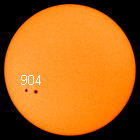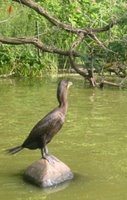On public outreach
When surfing the web about astronomy public outreach, I came across CAP2005, Communicating Astronomy with the Public. CAP2005 has made available talks, slides, and other material for public consumption.
Interestingly, under heading "Plenary Session 5: Innovations" is a presentation written by S&T editor Dr. Rick Feinberg & Night Sky editor Kelly Beatty, Using the Night Sky to Cultivate Public Interest in Astronomy. Download abstract or the PowerPoint presentation.
The presenation speaks about the astronomy community known of their readership and through interaction with dealers and spectators. They go onto speak if the challenges taht exist and how they have responded to increase appreciation and reach (sales). For instance here they offer up an illustration of their average reader:
- 10% beginner
- 50% amateur
- 35% advanced amateur
- 5% professional
- Owns 2+ telescopes
- Owns 2+ binoculars
- Observes regularly
My experience - go out and share the views with the public. I've yet to see anyone disappointed.











